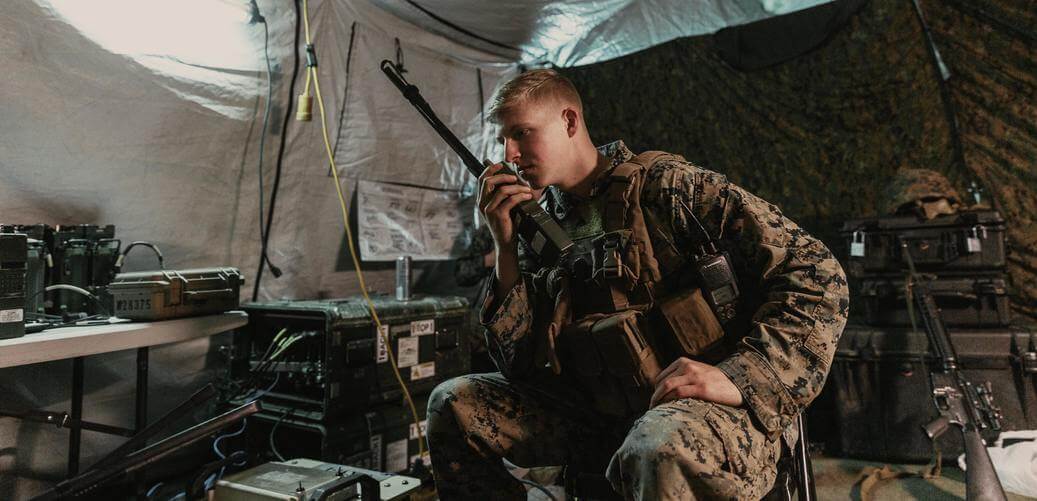The Top 3 Military Fabric Uses (That Aren’t Clothes)

The United States Armed Forces is one of the most prolific users of materials of all kinds, especially military fabric created with industrial sewing techniques. Military uniforms are an obvious example of textiles used by armed forces everywhere. Except for highly toughened products like the Demilitarization Protective Ensemble, the sturdiness and reliability of industrial sewing are more often implemented in non-garment uses.
Because the military requires exacting and highly documented mil-spec fabric specifications, chances are, if a product is good enough for the military, it’s good enough for everybody else, too.
Military Fabric Combat Accessories
Soldiers have long referred to the wide variety of stuff they carry into combat as “battle rattle,” both because there are often a lot of accessories important to the infantryman’s job and because it is all secured to their bodies with flexible, industrially-sewn gear. As a soldier runs, as they often do, their gear makes a distinctive rattling noise.
One of the reasons for that rattle is because of how their equipment is affixed, using sewn products like combat webbing. The soldier’s battle dress uniform (BDU) is obviously made from fabric, but so are the straps and bags used to carry these additional items like ammunition, protective equipment, armor, binoculars, and supplies.
Fuel Bladders
A rocket or missile seems like a simple hollow tube, but there is a lot happening under the metal shell of the rocket. Besides the payload, the rocket needs an engine, and that engine needs fuel. The stresses applied to a rocket in flight are such that the containers holding the liquid propellant need to be flexible to adapt to the changes in pressure, atmosphere, gravity, and temperature.
These internal tanks are lined with fuel bladders created with industrial sewing. Similar devices are used in the creation of the fuel bladders for UAVs made by Vinyl Technology.
Fuel storage can also be accomplished through industrially-sewn structures that stand freely on their own in remote locations. These large storage tanks can be deployed in places where a stable, reliable source of fuel is needed. They can supplement military operations of all kinds, land or sea, because of another great quality of fabric — fill it full of air instead of fuel, and it floats.
Alternatively, a drinking water storage bag or inflatable pneumatic mattress can be created.
Military Fabric Tents and Structures
Industrial sewing provides an opportunity that you don’t find in other methods of creating structures. You can’t fold up a concrete bunker and stow it in a transport compartment or change your mind about the deployment of a steel-walled barracks after you’ve built it. These are both possible with industrially-sewn fabric buildings, and all of these are extremely important for military operations that can take place in any environment on Earth (and sometimes beyond).
For more information about mil-spec fabric designations and industrial sewing at Vinyl Technology, check out these blogs:

